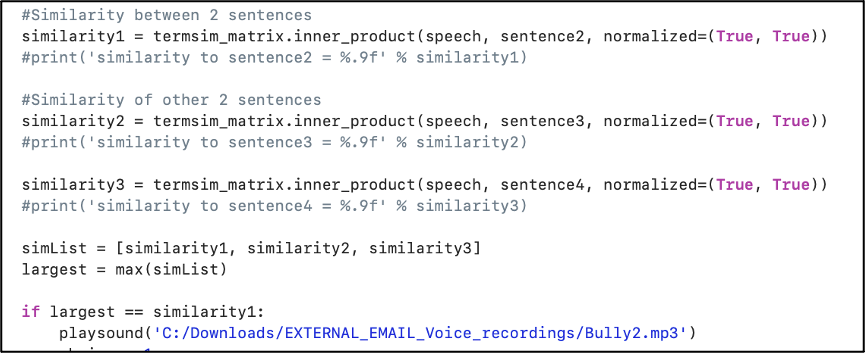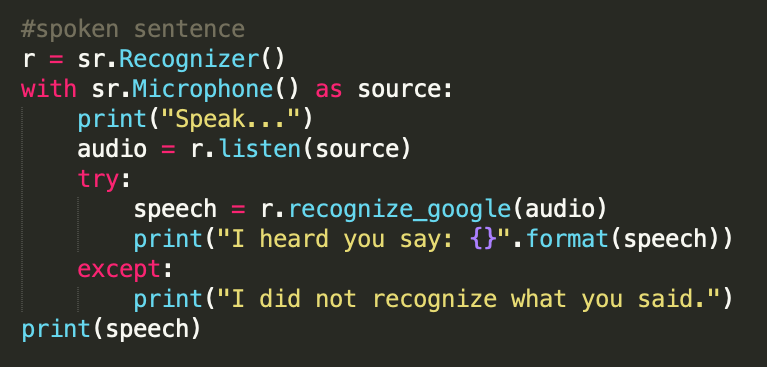Applying Natural Language Processing into a virtual reality world to allow a bully and a victim to interact in a natural way.
A functional Natural Language Processing system, using Python and C#, to allow for a virtual bully and a user to have a verbal interaction.


